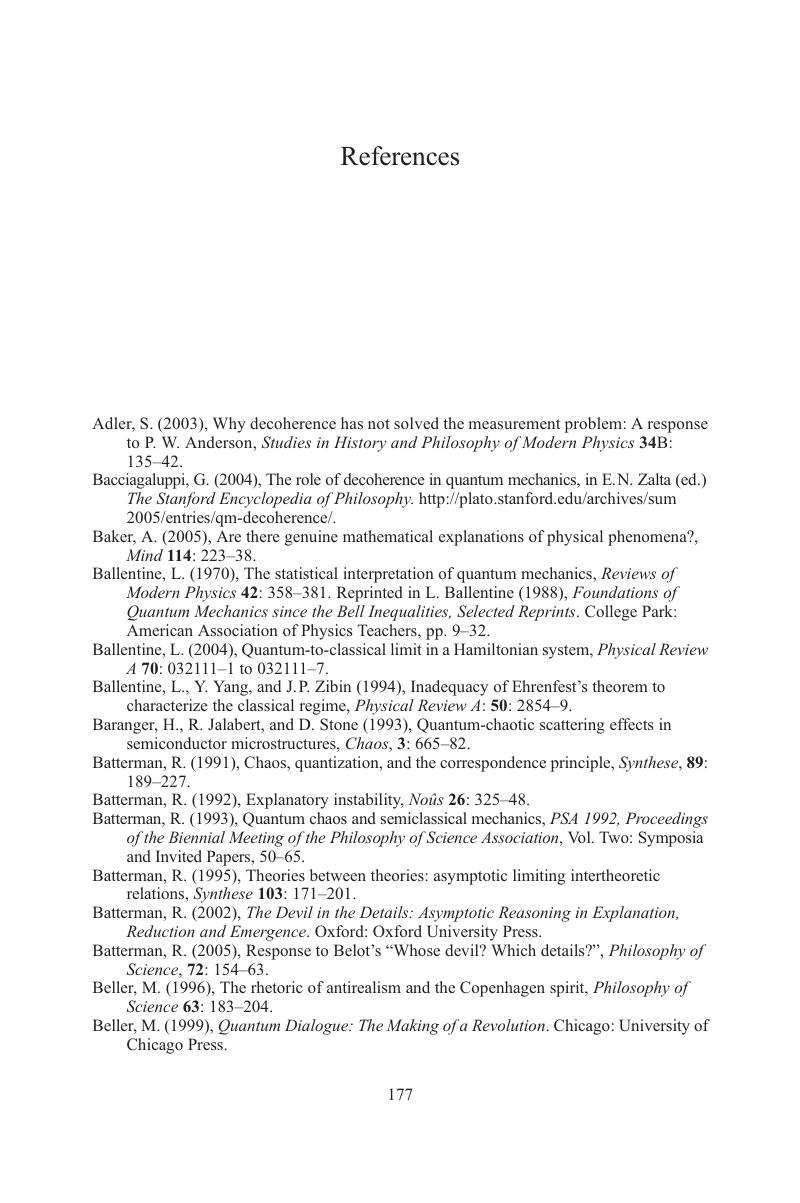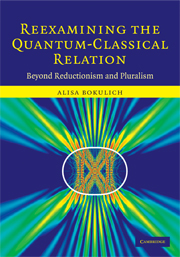Book contents
- Frontmatter
- Contents
- Acknowledgements
- Introduction
- 1 Intertheoretic relations: Are imperialism and isolationism our only options?
- 2 Heisenberg's closed theories and pluralistic realism
- 3 Dirac's open theories and the reciprocal correspondence principle
- 4 Bohr's generalization of classical mechanics
- 5 Semiclassical mechanics: Putting quantum flesh on classical bones
- 6 Can classical structures explain quantum phenomena?
- 7 A structural approach to intertheoretic relations
- References
- Index
- References
References
Published online by Cambridge University Press: 04 August 2010
- Frontmatter
- Contents
- Acknowledgements
- Introduction
- 1 Intertheoretic relations: Are imperialism and isolationism our only options?
- 2 Heisenberg's closed theories and pluralistic realism
- 3 Dirac's open theories and the reciprocal correspondence principle
- 4 Bohr's generalization of classical mechanics
- 5 Semiclassical mechanics: Putting quantum flesh on classical bones
- 6 Can classical structures explain quantum phenomena?
- 7 A structural approach to intertheoretic relations
- References
- Index
- References
Summary

- Type
- Chapter
- Information
- Reexamining the Quantum-Classical RelationBeyond Reductionism and Pluralism, pp. 177 - 190Publisher: Cambridge University PressPrint publication year: 2008



